For adults, any kind of messy play can feel like it’s not worth the amount of stress, preparation and clean-up work. However, early childhood experts agree that there are many benefits to messy play, especially sensory activities like playing with water, play dough or paints.
For babies and toddlers who aren’t adept with their pincer grip just yet, finger paints are probably the safest and easiest option for a start. There’s no fixed age, really, for starting on paints! But it definitely would help if your child is able to sit for longer periods by then.

Why paint?
Painting allows even the very young to express themselves and experiment with their senses. Getting their fingers and sometimes the rest of their bodies into paints, can help your child to develop hand-eye coordination and fine-tune his motor skills.
Oftentimes, what looks like a horrific mess on the surface is actually a deep learning experience for your child.
While dabbling in paints, your child gets to look at different colours, experiment with mixing, and – with finger paints – feel the paint when it’s wet and dry, thin and thick.
As your child is given a designated “area” to work on, he learns to develop his spatial awareness to know where to add paint, and to gauge if he has enough paint in the container or on his hand for the desired effect.
Making it more mess-free
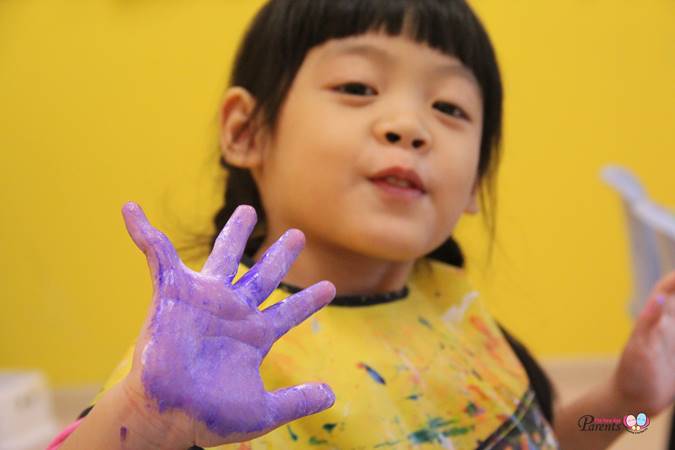
Babies can be put into their high chairs to paint, to reduce the radius of the mess, making clean up easier. Cover the tray-table with paper and put a small amount of finger paint in the middle. Then let your baby have fun squishing and spreading the paint around the paper.
You can do this activity just before bath time, with the baby wearing only his diapers. You can even do it in the bathtub in the toilet for a quick transition to bath and clean-up!
With older babies and toddlers who can follow instructions and adhere to limits, stick a big sheet of paper on the floor or wall so they have more freedom with their movements without damaging your furniture.
Getting started
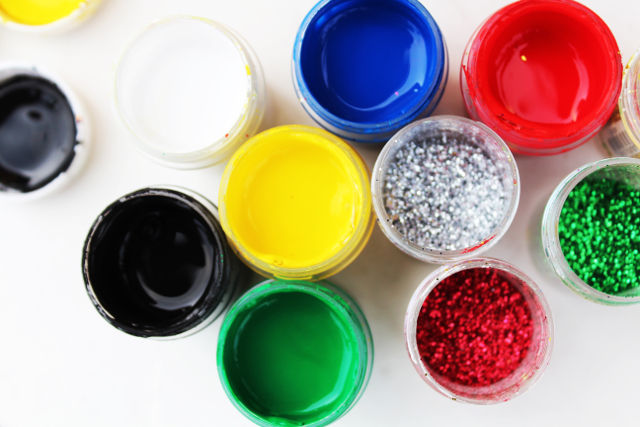
Crayola finger paints are non-toxic and come in bright primary colours, great to start off your child on his painting journey!
But if you are concerned about your baby eating too much of the paint, make some edible paint him with just a few simple ingredients.
Unfortunately, this means you won’t be able to save the artwork, so remember to snap some pictures to preserve the memory.
You can make paint with instant vanilla pudding mix and food colour. Make the pudding according to the directions on the package and add a bit of food colouring. Another easy recipe uses instant Jell-O and water. Let the hot Jell-O cool before giving it to your baby.
Make the process more interesting by sporadically providing your baby with tools that allow him to paint with different textures, such as large pieces of sponge or strips of twine.
Here are other fun ideas to try out with your child!
- Splattering
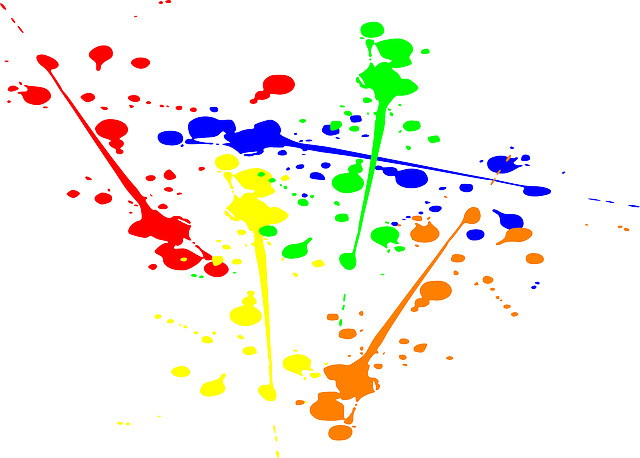
All you will need is paint (dilute slightly with water if necessary) and an assortment of brushes, like old toothbrushes or bottle brushes. Dip the bristles in the paint and flick onto the paper! It’s a lot of fun! An apron or old clothes is a must.
- Vroom vroom!
Many little kids, both boys and girls, love cars. Run the cars through a Styrofoam tray of paint and then onto the paper to make a series of tracks any which way! As the different coloured tracks criss and cross, your child gets to see the colours mix and change.
- Vegetable printing
Use hard vegetables like uncooked carrots, potatoes and celery. Celery stalks are the easier – just cut them down to a size that’s easy for little hands to wield. For potatoes and carrots, cut them in half first, and then cut around a simple design (square, heart, circle) on the cross-section.
Dip in paint and print. Besides the magic of seeing a shape appear on the paper, this also teaches children about limitations – with each printing, the colour intensity fades until there’s no paint left on the vegetable, and it’s time for more paint!
- Marbling
Place paper in a deep vessel. A roasting pan could work, or a box. Coat marbles in paint of different colours, drop them in the vessel and swirl them about, up and down, left and right, to create beautiful streaks all over the paper!
So now you’ve got plenty of ideas to get you started. It’s time to roll up your sleeves and enjoy some messy play time!
By Dorothea Chow.
Check out these art schools for your child:
– Tree Art
– ARTARY/span>
– heART Studio
– Da Little Arts School
* * * * *
Like what you see here? Get parenting tips and stories straight to your inbox! Join our mailing list here.
Want to be heard 👂 and seen 👀 by over 100,000 parents in Singapore? We can help! Leave your contact here and we’ll be in touch.




































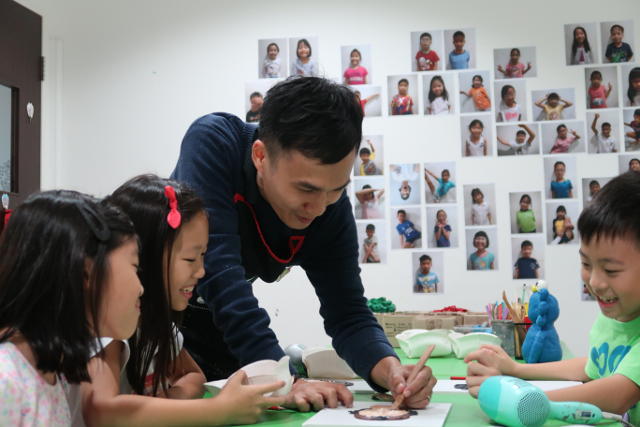
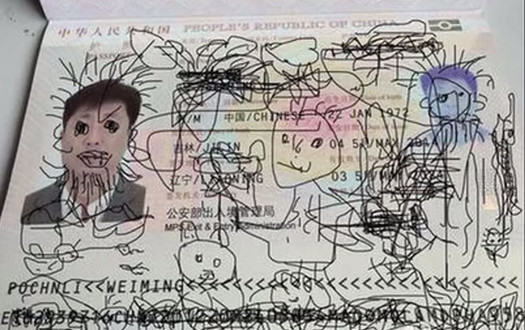
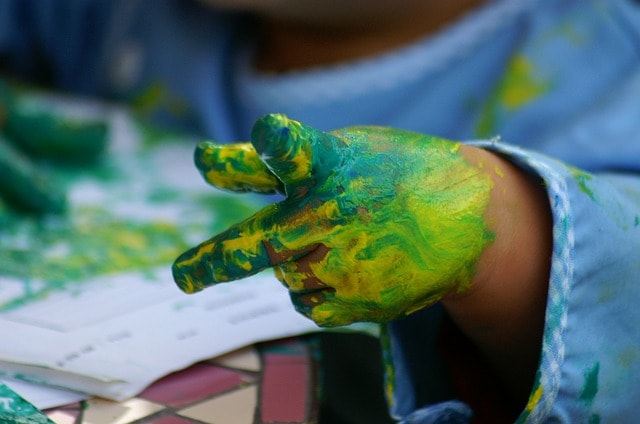
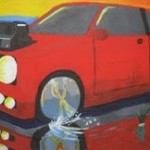
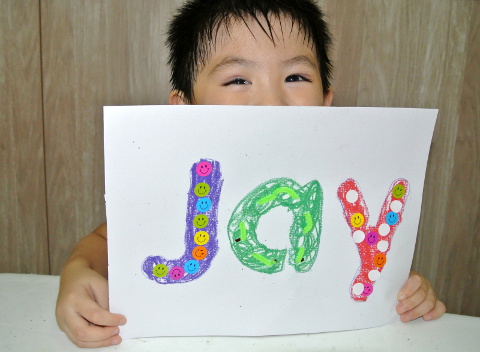
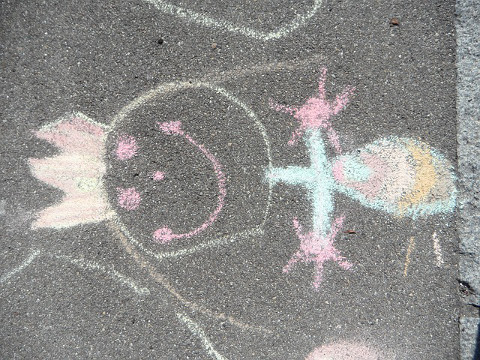
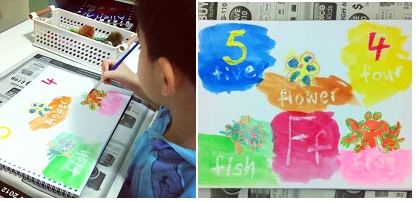
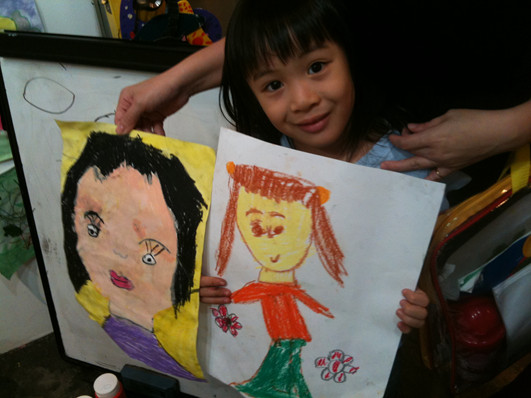
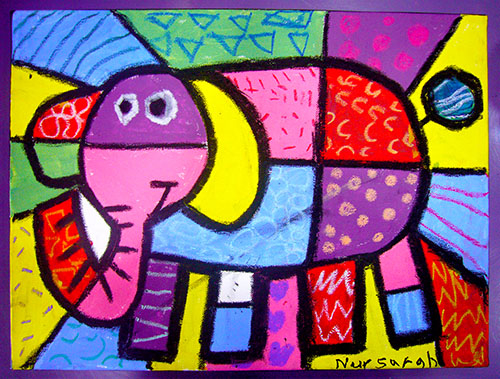
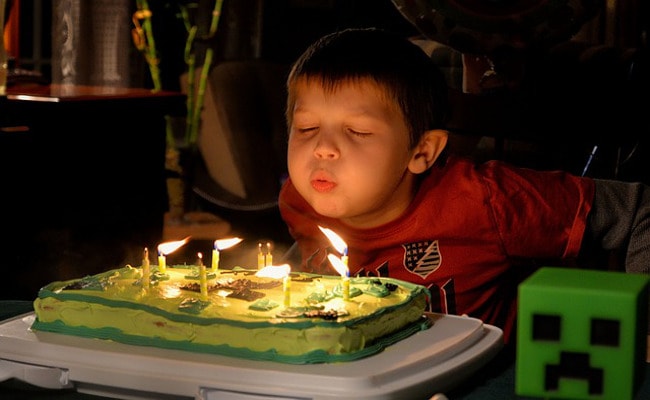
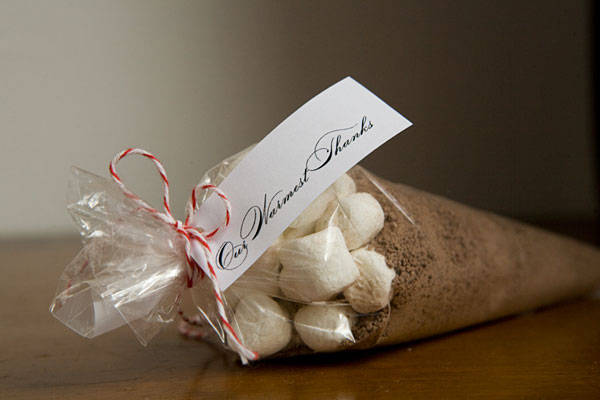
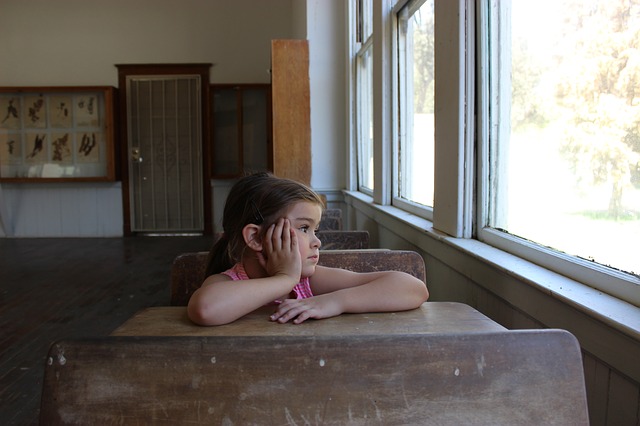









Leave a Comment: